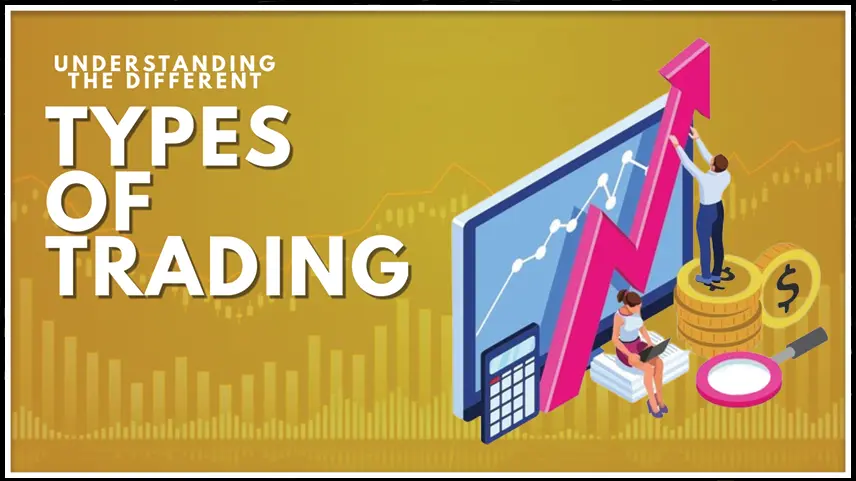Understanding the Different Types of Trading
Trading can be a lucrative way to invest your money, but with so many different types of trading accounts of trading in stock market available, it can be difficult to know where to start. This guide will help you understand the pros and cons of each type of trading in the stock market, so you can make an informed decision about which method is right for you.

Introduction to Trading
Trading is the act of buying and selling financial assets, such as stocks, bonds, and commodities, with the purpose of earning a profit. There are many different types of trading stocks market, each with its own unique set of advantages and disadvantages. Some traders prefer to focus on short-term gains, while others take a more long-term approach.
What are the types of trading?
How many types of trading in share market? Understanding the different types of trading in stock market is essential if you want to be successful in the world of finance. Different types of trading markets are given below:
Day Trading
Day trading is a types of trading in share market where the traders buy and sell financial assets within the same trading day. The intent is to earn a profit from small price motions. Day traders generally use technical analysis and charting tools to specify short-term trends and patterns. This types of trading in stock market requires a lot of discipline and focus, as traders need to make quick decisions and react to market changes in real time. Day trading can be very profitable, but it also carries a high level of risk, as traders can lose money just as quickly as they can make it.
Swing Trading
Swing trading is a types of trading in share market that involves holding positions for several days to several weeks. The goal is to capture short-term price movements and profit from market fluctuations. Swing traders use technical analysis to identify trends and patterns but also consider fundamental factors such as company news and economic data. This types of trading in share market requires less time and attention than day trading, but it still carries a significant amount of risk. Swing traders need to be able to manage their positions and risks effectively and have a solid understanding of market trends and indicators.
Position Trading
Position trading is a long-term trading technique that involves holding positions for weeks, months, or even years. The goal is to capture major price movements and profit from long-term trends. Position traders use fundamental analysis different types of trading analysis to identify undervalued or overvalued assets and often hold diversified portfolios to minimize risk. This types of trading on stock market require patience and discipline, as well as a deep understanding of market trends and economic factors. Position traders also need to be able to manage their positions effectively and adjust their strategies as market conditions change.
Scalping
Scalping is a high-frequency trading technique that involves buying and selling shares within seconds or minutes. Traders who use this strategy aim to profit from the small price movements that occur frequently in the stock market.
Algorithmic Trading
Algorithmic trading is an all different types of trading in the stock market where traders use computer algorithms to buy and sell stocks automatically based on predetermined rules and strategies. Algorithmic trading, also known as algo trading or automatic trading, directs to the use of computer programs or algorithms to automatically perform trades in economic markets. Algo trading can be used to execute trades in various asset classes, including stocks, bonds, commodities, and currencies.

0 comments